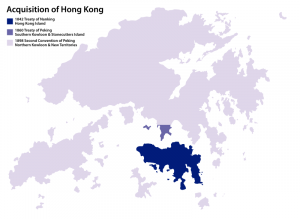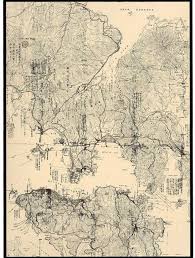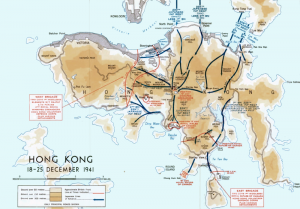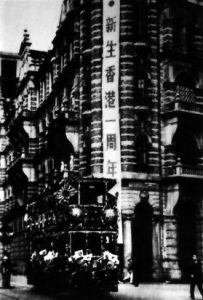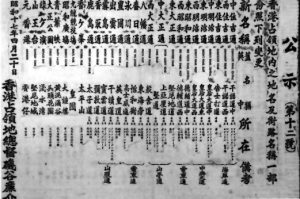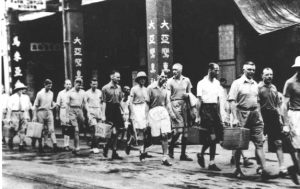I. Sino-Japanese War (1937–45)
- Background—”Greater East Asia Co-Prosperity Sphere“
- Roles of Hong Kong—declared neutral zone (September 1938) . . . 50 tons of ammunitions and supplies per month (< 1938) . . . relocation of Chinese newspapers . . . relief organizations . . . CCP/KMT(GMD) operations . . .
- Impacts on Hong Kong—~500,000 refugees (1938) . . . pop. > 1.5 million (1941) . . . Emergency Powers Ordinance (reinstated 1938) . . . conscription (July 1939) . . . air-raid tunnels (1940) . . . evacuations (1940)
II. The Battle of Hong Kong (8–25 December 1941)
- Preparation—10,000-strong force (2 British battalions, the Hong Kong Volunteers, 2 Indian infantry battalions, and 2 battalions of infantry from Canada) vs. >20,000 Japanese troops
- The battle—The Royal Rifles of Canada . . . The Winnipeg Grenadiers . . . 1,975 (1,050 killed or wounded)
III. Life during the Occupation
- Imprisonment of Euro-Americans
- repatriation of Chinese population—pop. < 600,000 (August 1945) . . . at least 10,000 executed . . . Kenpeitai (Japanese military police) . . . shortages
- “Asia for Asians” / “Hong Kong for the East Asians”—Meiji Road (formerly Queen’s Road) . . . calendar . . . holidays . . . East Asia Academy (1943)
- Collaboration and Resistance—Chinese Representative Council . . . Chinese Cooperative Council (chaired by Chow Shouson) . . . British Army Aid Group (BAAG) . . . East River Column (~6,000)
IV. Future of Hong Kong
Discussion
- How had the war affected the people of Hong Kong before December, 1941?
- Apart from those who had been sent to the internment camp at Stanley, how did people in Hong Kong negotiate their daily lives during the War? Do a quick research. In addition to the assigned readings, what other first-hand accounts could you locate?
- Consider the document on "cultural activities" (pp. 225–227). What functions was this piece of propaganda supposed to serve? And why might it work?
- In general, reflect on the primary sources available. What are their limitations? In what ways were the wartime experiences of Hong Kong distinctive, and in what ways were they part of a broader pattern of human sufferings?
Maps
Images
Media
References
- Chan Sui-jeung. East River Column: Hong Kong Guerrillas in the Second World War and After . Hong Kong: Hong Kong University Press, 2009.
- Emerson, Geoffrey Charles. Hong Kong Internment, 1942–1945: Life in the Japanese Civilian Camp at Stanley . Hong Kong: Hong Kong University Press, 2008.
- Greenfield, Nathan M. The Damned: The Canadians at the Battle of Hong Kong and the POW Experience, 1941–45. Toronto: HarperCollins Canada, 2010.
- Linton, Suzannah, ed. Hong Kong's War Crimes Trials . Oxford: Oxford University Press, 2013.
- Snow, Philip. The Fall of Hong Kong: Britain, China and the Japanese Occupation. New Haven and London: Yale University Press, 2003.
- Tsang, Steve. Democracy Shelved: Great Britain, China, and Attempts at Constitutional Reform in Hong Kong, 1945–1952. Hong Kong: Oxford University Press, 1988.

